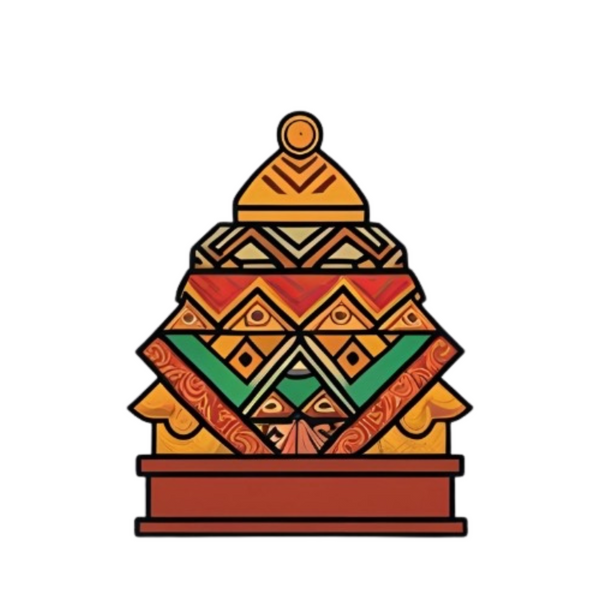
The Nine Yānas: A Clear Beginner’s Guide to the Nyingma “Nine Vehicles"
Share
What is a “yāna”?
In Buddhism, yāna means “vehicle”—a method that carries you from confusion to awakening. The Nyingma school (the oldest school of Tibetan Buddhism) organizes the Buddha’s teachings into nine yānas. This isn’t about judging people; it’s a practical map. Different minds need different tools. All nine aim at freedom from suffering and the realization of wisdom and compassion.
How to read this map
-
Not a ladder you must climb rung by rung. Many people practice elements from several vehicles at once.
-
Same destination, different routes. Each yāna has its own view, meditation, conduct, and result.
-
Tantric vehicles require empowerment and guidance. If a vehicle is labeled “tantra,” you traditionally need a qualified teacher’s empowerment (abhiṣeka) and to keep samaya (sacred commitments).
I. The Foundational (Sūtra) Vehicles
1) Śrāvakayāna (Hearer’s Vehicle)
Aim: Personal liberation from suffering (nirvāṇa).
View & Practice: Four Noble Truths, Noble Eightfold Path, mindfulness, ethics, concentration, insight.
Result: Arhatship—ending the causes of suffering.
2) Pratyekabuddhayāna (Solitary Sage’s Vehicle)
Aim: Personal liberation discovered independently.
View & Practice: Deep contemplation of dependent origination (the Twelve Links); often solitary practice.
Result: A pratyekabuddha—self-liberated through insight into conditioned arising.
3) Bodhisattvayāna (Great Vehicle / Mahāyāna)
Aim: Complete Buddhahood for the benefit of all beings.
View & Practice: Bodhicitta (awakening-mind), six perfections (generosity, ethics, patience, diligence, concentration, wisdom), emptiness insight, compassion in action.
Result: Buddhahood—wisdom and compassion fully realized.
II. The “Outer” Tantras (Action, Performance, Yoga)
4) Kriyā-tantra (Action Tantra)
Flavor: Ritual purity and devotion.
Practice: Mantra, mudrā, offerings, bathing/cleanliness, treating the deity as “above and before” you.
Key Move: Outer purity supports inner transformation.
5) Caryā-/Upa-tantra (Performance/Conduct Tantra)
Flavor: Balance of outer ritual and inner meditation.
Practice: You relate to the deity more intimately; ritual continues, but inner alignment grows.
Key Move: Outer and inner methods work together.
6) Yoga-tantra
Flavor: Union becomes central.
Practice: The deity is no longer “other.” You meditate from non-duality—wisdom and method are already united.
Key Move: Stable, non-dual devotion and insight.
III. The “Inner” Tantras (Mahāyoga, Anuyoga, Atiyoga)
In Nyingma, these three are the heart of Vajrayāna.
Mahāyoga emphasizes the Generation Stage (bskyed rim).
Anuyoga emphasizes the Completion Stage (rdzogs rim).
Atiyoga (Dzogchen) points directly to the mind’s primordial purity.
7) Mahāyoga (Great Yoga)
View: All appearances are the play of emptiness and luminosity.
Practice: Generation Stage—you arise as the deity, visualize the mandala, recite mantra, cultivate “divine pride” (confidence in your awakened nature).
Result: Ordinary appearance and clinging loosen; the world is experienced as sacred.
8) Anuyoga (Subsequent Yoga)
View: Wisdom is already present; remove obscurations to let it shine.
Practice: Completion Stage—refining the channels, winds, and drops (nāḍī, prāṇa, bindu); direct yogic methods that reveal innate clarity.
Result: Bliss and emptiness merge; duality collapses at the energetic level.
9) Atiyoga (Great Perfection, Dzogchen)
View: The mind’s primordial purity (rigpa) is present now—open, lucid, compassionate.
Practice: Direct introduction by a qualified master; trekchö (“cutting through”) to naked awareness; tögal (“leaping over”)—visionary practices that reveal spontaneous presence.
Result: Effortless recognition of your true nature; non-meditation because nothing is missing.
How the nine fit together (without getting lost)
-
Same mountain, many trails. Some climbers need switchbacks (gradual training), others take a direct ridge (Dzogchen).
-
Ethics and bodhicitta are universal. Even in high tantras, kindness, honesty, and responsibility are non-negotiable.
-
Empowerment matters. For tantric vehicles (4–9), ask a qualified teacher. Safety and integrity protect both practice and practitioner.
-
Preliminaries help. Refuge, vows, generating bodhicitta, and preliminary practices (ngöndro) stabilize the path—whatever vehicle you enter.
How to start (today)
-
Hear: Pick one reliable teaching (a short talk or a few pages of a sūtra) each day.
-
Reflect: Journal one line: “How would my day change if I lived this?”
-
Meditate/Practice: 5–10 minutes of breath awareness, a simple mantra (e.g., “Om Mani Padme Hum”), and one deliberate act of kindness.
-
Find guidance: If tantra interests you, look for a reputable teacher and community; ask about prerequisites and commitments.
Quick Reference Table
| # | Vehicle (Skt) | Common Name | Focus & Method | Quick Note |
|---|---|---|---|---|
| 1 | Śrāvaka | Hearer | Four Noble Truths, Eightfold Path | Personal liberation |
| 2 | Pratyekabuddha | Solitary Sage | Twelve Links, solitary contemplation | Self-discovered insight |
| 3 | Bodhisattva | Mahāyāna | Bodhicitta, Six Perfections, emptiness | Awakening for all beings |
| 4 | Kriyā-tantra | Action | Ritual purity, mantra, offerings | Deity as sublime “other” |
| 5 | Caryā-/Upa-tantra | Performance | Balance of ritual & inner meditation | Growing inner alignment |
| 6 | Yoga-tantra | Yoga | Non-dual devotion & view | Deity and mind not-two |
| 7 | Mahāyoga | Great Yoga | Generation Stage (mandala, mantra) | Sacred outlook |
| 8 | Anuyoga | Subsequent Yoga | Completion Stage (channels, winds, drops) | Energetic integration |
| 9 | Atiyoga (Dzogchen) | Great Perfection | Direct recognition of rigpa | Effortless presence |
FAQ (fast and honest)
Do I need all nine? No. Practice what genuinely transforms you—ethics, compassion, wisdom remain core everywhere.
Is Dzogchen “higher”? It’s “direct,” not “better.” Without honesty and compassion, even “high” methods stall.
Where should I begin? Refuge, bodhicitta, basic meditation. If tantra calls you, seek empowerment and a steady mentor.
Bottom line
The Nine Yānas are a compassionate map. They honor our diversity while pointing to one reality: your own luminous mind is the path and the goal. Begin where you are. Stay kind, stay curious, and let practice make the teachings real.
